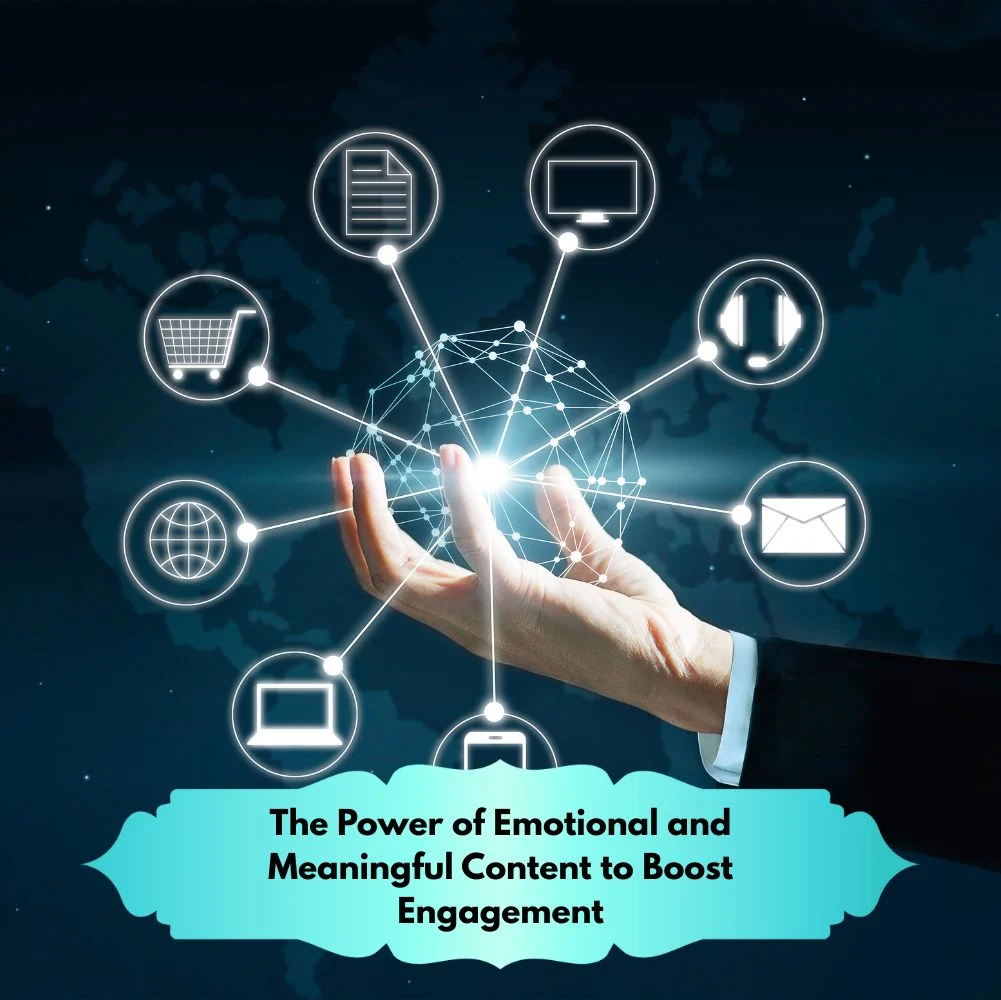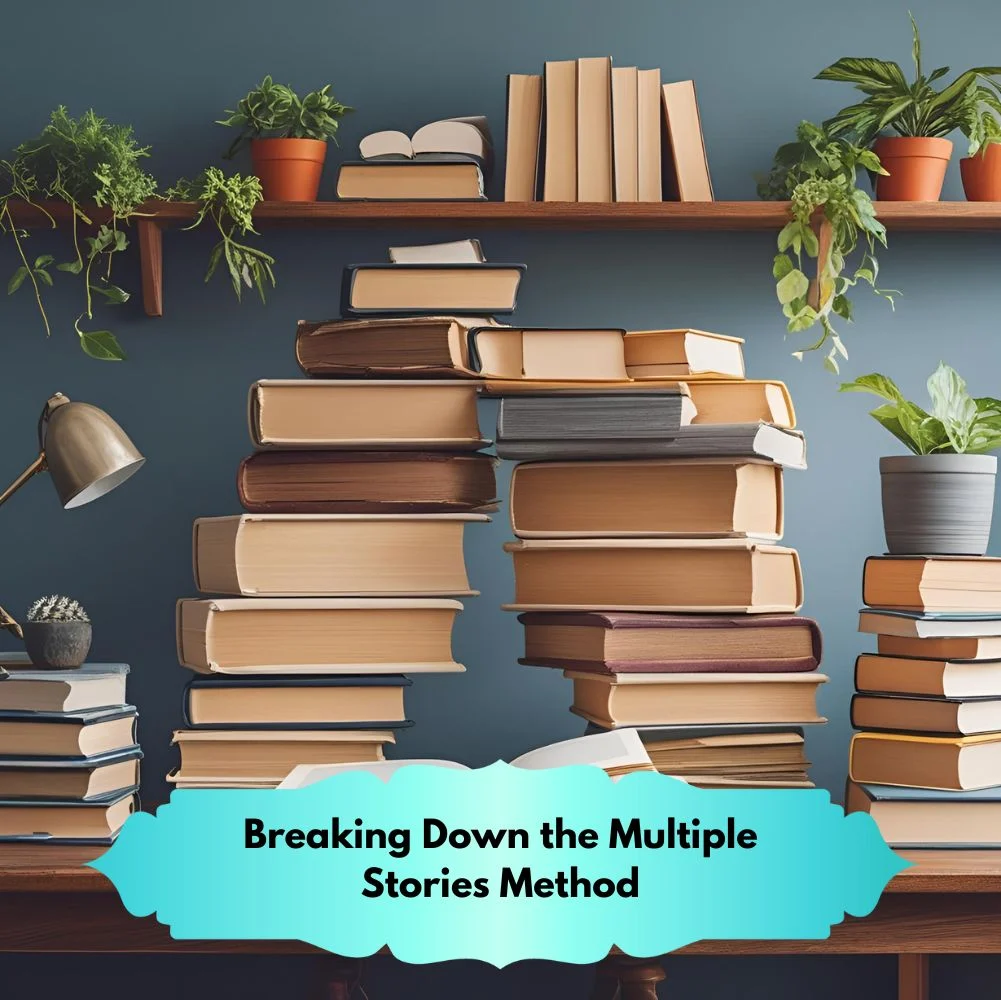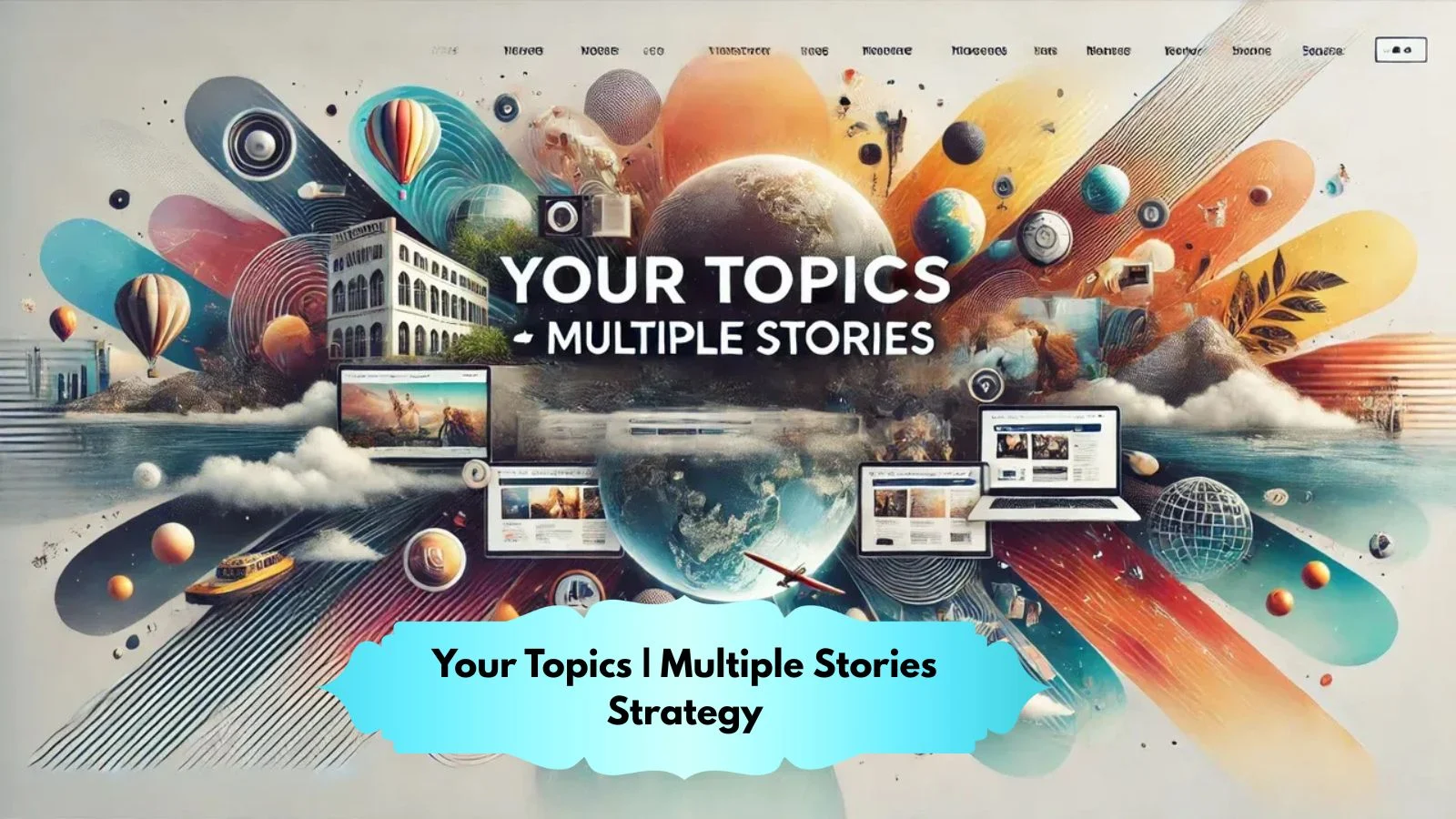Content creation has changed dramatically over the years. Gone are the days when long, boring articles filled with plain facts were enough to grab attention. Today, audiences crave content that feels real, meaningful, and emotional. The Your Topics | Multiple Stories strategy for 2025 answers this call by breaking free from old-style, one-directional storytelling and embracing diverse voices, formats, and layers.
Let’s dive into why this approach matters now more than ever — and how you can use it to boost your content’s engagement and trust.
What Is the Multiple Stories Strategy and Why It Matters in 2025
The Multiple Stories Strategy is about moving beyond the old-school single narrative approach to content. Instead of telling one story from a single viewpoint, this strategy layers multiple voices, perspectives, and formats to create a richer, more engaging experience.
Why does this matter in 2025? Because audiences are smarter, quicker to skim, and hungry for meaningful connections. Single stories don’t cut it anymore — they lack depth and emotional resonance. Multiple stories provide diverse angles, emotional hooks, and real-life relevance that keep readers, viewers, and listeners hooked.
Think of it like this: a single-story article is a one-note tune, while multiple stories create a symphony — complex, layered, and unforgettable.
How Content Creation Has Changed: From Single Stories to Multi-Layered Narratives
Content creation has dramatically evolved. The rise of social media, mobile-first browsing, and shortened attention spans means people don’t just want information — they want connection.
- Old content: One-directional, fact-heavy, lacking feelings
- New content: Multi-layered, emotional, real
- Result: Deeper engagement, longer time on page, more shares
Example: Instead of just writing a blog post on remote work benefits, you share a podcast interview with a freelancer, a video on a manager’s challenges, and an infographic with recent data. This multi-narrative approach creates a fuller picture and keeps your audience engaged across formats.
The Power of Emotional and Meaningful Content to Boost Engagement

People don’t just read to know; they read to feel. Emotion is the secret ingredient that turns skimmers into loyal followers.
- Emotional content increases trust
- Drives shares and comments
- Encourages repeat visits
Idioms to remember: “People buy with their hearts, not just their heads.”
Quote: “Stories are the emotional glue that binds brands and audiences.”
Including emotions like pain, joy, struggle, and success makes your content relatable and memorable — essential for today’s attention economy.
Why Old-Style, One-Directional Content Is No Longer Enough
The old formula — dumping facts, no feelings, no layers — leaves audiences cold.
| Problem | Impact | New Approach |
| Single-story content | Boring, easily ignored | Multiple layers, richer storytelling |
| One-directional voice | Lacks empathy, trust | Diverse voices and perspectives |
| Plain information | Skimmed or skipped entirely | Emotional and meaningful context |
In 2025, connection matters more than just content. Content that speaks only facts but ignores emotions and diversity in voice fails to engage and convert.
Breaking Down the Multiple Stories Method: A Simple Yet Powerful Approach

At its core, the Multiple Stories method is about breaking a topic into many parts — each with a unique voice, angle, or format.
Steps include:
- Identify core topic and sub-topics
- Find diverse voices to share stories (experts, users, influencers)
- Choose multiple formats (blogs, videos, podcasts)
- Layer stories to provide depth and emotional impact
This simple framework packs a punch because it reflects real life — complex, layered, and diverse.
Using Different Voices and Perspectives to Connect With Diverse Audiences
No two people see the world the same way — so why tell one story to everyone?
Incorporate:
- Personal stories to evoke empathy
- Expert insights for authority
- User-generated content for authenticity
Example: In a blog about mental health, include a personal recovery story, expert tips from a therapist, and a video interview with a wellness coach. Each voice connects with a different part of your audience.
How Multiple Story Formats (Blogs, Podcasts, Videos, Reels) Enhance Reach
Different formats reach people where they are:
| Format | Best For | Example |
| Blogs | Detailed reading | Expert guides, case studies |
| Podcasts | In-depth stories, interviews | Weekly expert chats |
| Videos | Visual storytelling | Explainer videos, testimonials |
| Reels | Quick, emotional hooks | Short tips, behind the scenes |
By using a mix, you amplify your message, cater to different learning styles, and increase overall reach.
The SEO Benefits of Rich, Layered Content in 2025
Google’s algorithms increasingly reward content that:
- Shows topical authority
- Uses semantic variety and entity-based optimization
- Keeps users engaged longer
Multi-story content naturally ticks all these boxes by providing depth, variety, and real value — leading to better rankings and higher organic traffic.
Crafting Content That Speaks to Readers’ Emotions and Intellect
To truly connect, your content must balance heart and mind. Facts engage intellect; emotions build connection.
How to achieve this:
- Lead with a story or question that triggers curiosity or emotion
- Use data and expert quotes to back claims and build credibility
- Include relatable anecdotes to humanize the topic
For example, when writing about climate justice, don’t just share stats — tell the story of a farmer affected by drought, followed by expert analysis on solutions. This combo creates a powerful emotional-intellectual connection.
Using Real-Life Examples and Expert Advice to Build Trust
People trust real experiences more than generic claims. Blend personal stories and expert advice to add layers of authenticity.
| Type | Purpose | Example |
| Personal Story | Build empathy and relatability | A freelancer’s journey in remote work |
| Expert Advice | Add authority and guidance | CEO’s tips on managing hybrid teams |
| Data & Statistics | Support claims with facts | Recent studies on work productivity |
By mixing these elements, you create trustworthy, compelling content that readers feel confident sharing.
Leveraging Data-Focused Stories to Add Authority and Depth
Data adds the backbone of credibility, but raw numbers can be dry. Turn stats into stories:
- Use infographics or interactive charts
- Share case studies demonstrating data in action
- Connect stats to real outcomes or emotional impact
Example: Instead of “67% of remote workers feel more productive,” say, “67% of remote workers report increased productivity — like Sarah, who balances work and parenting with new HR tools.” Data + story = stronger engagement.
Multi-Narrative Framework: How to Structure Your Content for Maximum Impact
A multi-narrative framework organizes content into interwoven stories that build on each other.
Framework structure:
| Layer | Purpose | Example |
| Core Narrative | Main message or theme | The benefits of remote work |
| Supporting Voices | Different perspectives & angles | Freelancer, manager, CEO views |
| Emotional Layer | Human stories and struggles | Personal challenges and wins |
| Data Layer | Facts and figures for authority | Recent research, case studies |
| Call to Action | Clear next steps for readers | Download guide, join webinar |
This layered approach helps readers see the full picture, making your content richer and more memorable.
Tools and Platforms to Plan, Track, and Optimize Multi-Story Content
Effective multi-story content needs planning and tracking. Here are top tools:
| Tool | Purpose | Features |
| Notion | Content planning | Organize story angles, assign tasks |
| Trello | Workflow tracking | Visual boards for progress tracking |
| Frase | SEO optimization | Keyword research, on-page SEO tips |
| Surfer SEO | Content optimization | Density tracking, semantic keywords |
| Canva | Visual content creation | Infographics, social media graphics |
| Descript | Audio/video editing | Podcast/video editing, transcription |
Using these tools keeps your multi-story strategy clean, efficient, and optimized.
How to Integrate Semantic SEO and Entity-Based Optimization
Semantic SEO means understanding the meaning behind words and related concepts, not just keywords.
Entity-based optimization focuses on:
- Using related topics and synonyms naturally
- Clustering content around main themes and entities
- Leveraging structured data (schema markup) to help search engines understand your content
This helps Google see your content as authoritative and helpful, boosting rankings and visibility.
Creating Strong Content Clusters and Pillar Pages for Better Ranking
Content clusters are groups of related content pieces around a pillar page—the main comprehensive article.
| Element | Role | Example |
| Pillar Page | Central hub, broad overview | “Complete Guide to Remote Work” |
| Cluster Posts | Deep dives into subtopics | “Managing Remote Teams,” “Freelancer Tips” |
| Internal Links | Connect cluster posts to pillar | Helps SEO and user navigation |
This hub-and-spoke model signals topical authority to Google and makes content easier for users to explore.
Matching Stories to Buyer Journeys: TOFU, MOFU, and BOFU Explained
Your multi-story content should fit where the reader is in the buying journey:
| Stage | Goal | Story Type | Example |
| TOFU (Top) | Inspire, create awareness | Personal story, inspirational reel | Millennial mom balancing work |
| MOFU (Middle) | Educate, build trust | Expert guides, interviews | Expert advice on remote tools |
| BOFU (Bottom) | Convert, decision-making | Case studies, product demos | Success story of company shift |
This targeted approach moves readers smoothly from awareness to conversion.
Case Study: How Multi-Story Content Helped a Brand Increase Engagement by 40%
A leading remote-work software company used the Multiple Stories Strategy to revamp its content. Here’s what they did:
- Created a pillar page on remote work trends in 2025
- Developed cluster posts including personal freelancer journeys, manager challenges, and CEO insights
- Produced multimedia content: podcasts, reels, blog posts
- Used data-driven stories supported by recent research and user statistics
Results:
| Metric | Before | After 6 Months | Change |
| Page Views | 50,000/month | 75,000/month | +50% |
| Average Time on Page | 2 min | 3.5 min | +75% |
| Social Shares | 500/month | 1,200/month | +140% |
| Engagement Rate | 3.2% | 4.5% | +40% |
This multi-layered content approach boosted trust, engagement, and SEO, proving the method’s power.
Story Mapping and Social Media Strategies to Amplify Reach
Story mapping helps plan which stories to tell, when, and on which platform. Align your stories with social media formats:
| Platform | Best Story Format | Engagement Tip |
| Articles, expert interviews | Use professional tone and data | |
| Reels, carousel posts | Visual storytelling, quick tips | |
| Threads, quotes | Share snippets, spark conversation | |
| YouTube | Vlogs, explainer videos | Long-form stories, tutorials |
| Podcasts | Interviews, discussions | Deep dives and personal narratives |
Plan your content calendar around these formats to reach diverse audiences and maximize engagement.
Building Loyalty Through Storytelling: Turning Readers into Fans
When your audience feels seen and heard, they stick around. Multiple Stories Strategy nurtures this by:
- Using authentic voices that reflect audience experiences
- Showing real struggles and successes for relatability
- Delivering consistent, valuable content that educates and entertains
Quote:
“People don’t just buy what you do; they buy why you do it.” – Simon Sinek
Storytelling that hits emotional and practical notes builds community and loyalty beyond a single transaction.
How to Use Story Layers Without Overwhelming Your Audience
Layering is powerful but can get complex. Here’s how to keep it simple:
- Break content into digestible chunks or mini-stories
- Use visual cues like headings, bullet points, and tables
- Offer multiple formats for different preferences (read, watch, listen)
- Provide clear navigation between layers and sections
Example: A blog post might start with a personal story, move into expert advice, and end with data highlights — each in separate sections with clear headings.
The Role of Multimedia Tools (Canva, Descript, Tableau) in Storytelling
Multimedia enriches stories by adding visual and audio layers:
| Tool | Best For | How It Enhances Storytelling |
| Canva | Graphics, infographics, social media posts | Makes data and concepts visually appealing |
| Descript | Podcast and video editing | Polishes audio/video for professional delivery |
| Tableau | Data visualization | Turns complex data into understandable visuals |
Using these tools helps create engaging, shareable content that appeals to different senses and learning styles.
Best Practices for Accessibility and Mobile-Friendly Content
Accessibility and mobile-friendliness are non-negotiable today.
Tips:
- Use short paragraphs and clear fonts for readability
- Add alt text for images and transcripts for audio/video
- Design for mobile-first: fast loading, touch-friendly buttons
- Use semantic HTML and ARIA labels for screen readers
Accessible content reaches a wider audience and improves SEO.
Crafting Consistent Tone and Style for Strong Brand Recognition
Your tone and style are your content’s personality. Consistency builds recognition and trust.
- Define a style guide covering language, voice, formatting, visuals
- Match tone to your target audience (friendly, professional, conversational)
- Use consistent colors, fonts, and logos in visuals
- Review all content regularly to maintain alignment
This helps audiences feel connected and familiar with your brand.
Tips for Creating Shareable Content That Drives Traffic and Conversions
Shareability drives organic growth. Here’s how to create content people want to share:
- Evoke strong emotions — joy, surprise, empathy
- Provide clear value or solve a problem
- Use eye-catching visuals and headlines
- Make sharing easy with social buttons and calls to action
- Tell relatable stories that invite others to comment or tag friends
Remember: Shareable content not only boosts traffic but also builds community.
The Future of Content Strategy: Why Multiple Stories Are Here to Stay
In 2025 and beyond, content that is multi-layered, emotional, and diverse in format will dominate.
Google’s algorithms favor content that is helpful, comprehensive, and user-focused — all strengths of the Multiple Stories Strategy.
This approach:
- Meets readers where they are — different interests, formats, and emotions
- Builds trust and authority with layered, authentic voices
- Boosts SEO with semantic, entity-based optimization
- Increases engagement, loyalty, and conversions
Multiple Stories aren’t just a trend; they’re the future of meaningful, impactful content creation.
FAQs
Q1: What exactly is the Multiple Stories Strategy?
It’s a content creation method that uses multiple perspectives, voices, and formats to tell a richer, more engaging story. Instead of one flat narrative, you layer personal stories, expert opinions, and data insights to connect with different audience types.
Q2: How is this different from traditional single-story content?
Traditional content often delivers plain facts in one voice. Multiple Stories content blends emotion, depth, and variety — which keeps readers engaged longer and improves SEO performance.
Q3: Does this strategy work for small creators or only big brands?
It works for both. Solo creators can start with just 3–4 layered stories per topic, then expand. The key is relevance and authenticity, not budget.
Q4: How can I make sure my multi-story content is SEO-friendly?
Use semantic keywords, structure your stories for readability, and cluster them around a central pillar page. Add structured data and keep your content genuinely useful.
Q5: Which formats work best for multi-story content?
Mixing formats works best — blog posts, reels, podcasts, case studies, and infographics. Match the format to your audience’s preferences and your story’s goals.
Conclusion
The Multiple Stories Strategy isn’t just a new way to write — it’s a shift in how we connect.
In 2025, attention is scarce, and single-thread, fact-only articles won’t cut it. By weaving together personal experiences, expert analysis, and emotional depth, you create a story that’s not only read but felt.
This approach builds trust, boosts engagement, and drives better SEO results because it speaks to both the heart and the mind. Whether you’re a solo blogger, a brand marketer, or a nonprofit, telling layered stories in varied formats will help your message travel farther and stick longer.
Remember:
People don’t just consume stories — they carry them.
Make yours worth carrying.












